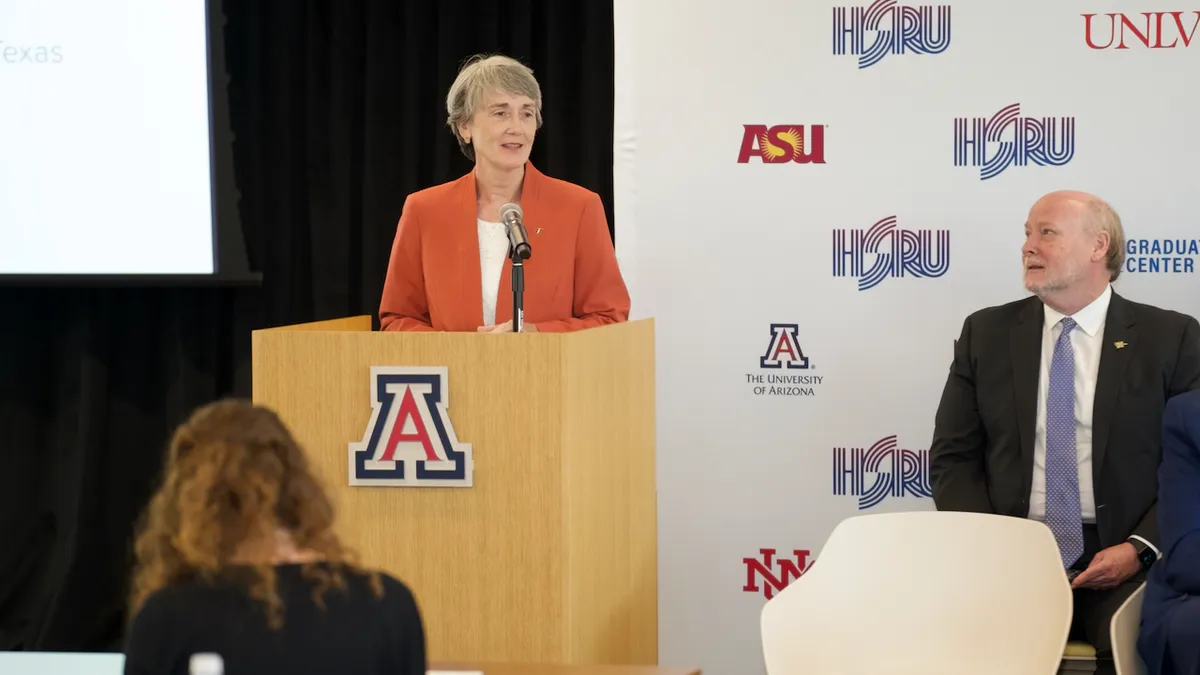Dive Brief:
- Twenty top-ranked U.S. research universities that enroll high shares of Hispanic students have created a coalition to help double enrollment of Hispanic doctoral students at their institutions, they announced Thursday.
- The Alliance of Hispanic Serving Research Universities is composed of prominent institutions such as Arizona State University, the University of Texas at Austin and the University of Nevada, Las Vegas.
- The group also aims to boost the number of Hispanic faculty members at the universities by 20%. It intends to reach this target — and the bolstered doctorate numbers — by 2030.
Dive Insight:
The U.S. Department of Education designates colleges that have student bodies made up of at least 25% full-time Hispanic undergraduates as Hispanic-serving institutions, or HSIs. This label enables them to compete for federal grants earmarked for these institutions.
The number of HSIs has exploded in recent years, with 559 institutions reaching the federal threshold in the 2020-21 academic year, according to the Hispanic Association of Colleges and Universities. On average, 29 colleges have received the HSI designation every year since 2013, the group found last year.
This in part reflects demographic changes in the country — the Hispanic or Latino population reached 62.1 million in 2020, swelling 23% over the last decade, according to recent U.S. Census Bureau data.
Students who are Latino — which is a term to describe those of Latin American descent and differs from Hispanic, which is a term describing those with origins in a Spanish-speaking culture — were also among the fastest-growing demographic groups in higher education. However, the coronavirus pandemic stalled that progress.
The new alliance intends to help remedy inequities this population faces.
The 20 institutions that comprise the group are all identified as R1 under the Carnegie Classifications, meaning they have a very high level of research activity.
R1 institutions are among the most influential in the country and receive the most federal research dollars. In 2020, the universities in the alliance spent more than $5.9 billion in research money.
Altogether, in fall 2020 they enrolled 766,718 students, one third of which were Hispanic. In the 2019-20 academic year, the universities graduated more than 11,000 doctoral students, about 13% of whom were Hispanic.
Heather Wilson, president of the University of Texas at El Paso and the alliance’s chair, said in a statement that despite Hispanic people’s presence in the U.S. workforce, they remain underrepresented in higher ed.
“No group is better positioned than we are to expand the pathway to opportunity,” Wilson said. “We believe we are stronger together than as individual institutions acting alone.”
Some of the institutions have already worked together on these issues. Last year, they began a project funded by a three-year, $5 million grant from The Andrew W. Mellon Foundation. It in part works to train doctoral students in Latino humanities.











